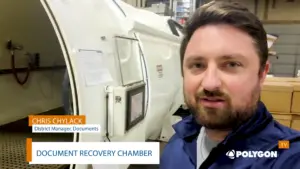Reducing downtime during changeover is a goal that any cost-conscious manufacturer would pursue. The reality of today’s market is there’s a great variety of products and sizes to meet consumer demands. It’s becoming more common for retailers to set specific requirements about the material and packing methods used, such as shelf-ready packaging. That means the responsibility is on manufacturers to accommodate these requirements with shorter runs and an increased number of changeovers. With changeovers, circumstances can arise that cause downtime. When mechanical failure or human error add even more minutes to downtime, it can cause problems like missed deadlines, increased waste and profit losses. Changeovers can’t be avoided, but their effects on downtime can be minimized through workforce training and mechanical solutions.
Workforce training
All too often, the manufacturers encounter a limited talent pool of experienced machine operators who can execute a quick, successful changeover.
Gain repeatability
Talk to any two operators, and they’ll have different opinions on which machine settings are best. Establishing standard settings raises confidence that the machine will work after a changeover. Improving repeatability results in less time spent adjusting and tweaking the settings, along with eliminating reliance on personal preferences that lead to inconsistent outcomes.
Coping with components
The number of parts and tools needed to execute a changeover can lead to confusion, variability and error. That only increases the odds of breakage and faults. While an Operations Manager would focus on smarter procedures to pare back the minutes of downtime, mechanical solutions can help them achieve their goals with greater consistency. Whether that means updating existing secondary packaging machinery or investing in new, automated equipment, here are a few considerations.
Reduce complexity
When there’s a changeover, each part has a number of change points that link and lock to the machine. More change points mean more opportunity for line-halting breakage and machine failure. Reducing change points to one single point along with streamlining the number of components results in a faster, faultless changeover.
Intuitive design
Because of scheduling demands, a machine operator can be rotating through different machines through the work week, or an operator may only complete one changeover a week. When it’s time for a changeover, shift managers are doing battle with the clock and a lengthy learning curve. The design of the machine parts can eliminate some of these headaches around changeovers. Clearly marked change parts for size and function, along with a clear and logical sequence, shortens time needed on changeovers, reduces human error that leads to faults, and allows managers to make better use of their team.
Reduce waste
When it comes to changeovers, waste comes with the territory, due to the cleanout and priming processes. Simple improvements to the machine design such as a shorter conveyor reduces the amount of product needed for priming. These improvements provide waste savings when it’s time to transition to a changeover. The ability to reduce waste brings more precision into planning. Ready to optimize your production line with secondary packaging machines that support your team’s ability to execute quick, precise, easy-to-implement changeovers? Douglas’s SmartSelectTM Automatic Changeover is just one of the features available to help you do just that. Fast, repeatable changeovers in less than five minutes, recipe-driven for repeatability and the flexibility to generate product-specific recipes. Get in touch with a Douglas team member now to learn more about how our line of innovative secondary packaging solutions can be completely customized to your unique needs.








